
We kindly inform you that, as long as the subject affiliation of our 300.000+ articles is in progress, you might get unsufficient or no results on your third level or second level search. In this case, please broaden your search criteria.

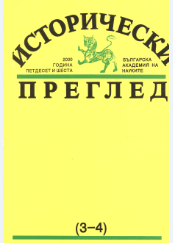
The article presents the programmes for national sovereignty of the Bulgarians launched on the pages of one of the most outstanding political newspapers published in Bulgaria in the period April 17, 1876 – August 27, 1877, the newspaper “Bulgarski Glas”, edited by the public figure Kiro Touleshkov. One of the great experts in the press of the Bulgarian National Revival, B. Andreev, characterizes the publication in question as “a purely political paper with a strong revolutionary orientation”. This qualification is true and well-grounded. The idea of an abrupt and categorical break with the structures of the Ottoman State sounds in the text or context of most publicistic material included in the pages of the “Bulgarski Glas” newspaper. Nevertheless, Kiro Touleshkov’s publication presents also the three possible alternatives for Bulgaria’s future state organization in the correlation dependence/ independence from the Turkish Sultan’s Government – administrative autonomy, political autonomy, full independence. The article interprets this phenomenon within the context of a more abstract notion of the Balkan ethnopolitical realities in the 19th century. The editor demonstrates in a convincing way that no Balkan nation has received its state sovereignty all at once and to a full degree. In a direct text or with the help of historical examples he persistently insists that the strength of the “Little” factor in “big politics” is expressed in their skill to discover the optimal prospects for solving their problems to link their plans (initiatives) and commitments with the shortest and most painless road to the mentioned optimum. Assuming also the possibility for Bulgaria not to obtain at once and in full her State independence, the publication expresses a well-measured political flexibility. And that without letting out of sight the nation’s ultimate goal: attaining full State sovereignty in the natural ethnic boundaries. By their attitude the circles standing behind the publication gave clear signals of their skill to work in a mature and responsible fashion in the field of the National Revival press.
More...
The theme of Europe, the Balkans and the Bulgarians has different aspects and considerable literature has accumulated on it in West European, Balkan and Bulgarian historiography. The most general survey made shows that for European historical thought of considerably greater interest as from the first centuries of the New Age were the questions connected with the political might and social structure of the Ottoman Empire. The studies on the Balkan peoples and their relations with the Catholic states as an independent subject of research are considerably less numerous. Bulgaria and the Bulgarians most often are included in the works of Slavicists, philologists and that chiefly with their political and cultural activities in the period prior to the Ottoman settlement in Europe. The achievements of Bulgarian and Balkan historiography prove that in the difficult conditions of the Ottoman feudal state, although at a considerably slower tempo economic processes similar to the European developed in the Balkans. Special room is devoted in the article to certain problems in historiography to the relations between East and West in the cultural sphere and between Catholicism and Orthodoxy. The need emerges for a thorough and detailed study of a number of questions the answers to which will contribute to the fuller elucidation of the structure and character of the Bulgarian and all-Balkan, and of the all-European culture.
More...
The peoples of SE Europe have gone through hard tests and great sufferings of the extremely painful condition, called “Balkanization” in the world encyclopaedias. The causes for the sorrowful1 glory are as much of a regional character as they rest in the egoistic geopolitical schemes of the Great Powers. As a matter of fact no more wrongs were done in the southeastern part of the Old Continent than in the other “civilized” countries. Globalization in the economy does not mean that the Europeans will be standardized to the extent of not knowing what sort of people they are. Difference leads to unity in variety and is no obstacle to joining the achievements of the others. The inhabitants of the Balkans are not “second class” Europeans. The Balkans can be not only the end but also the beginning of Europe depending on the point of view. Today the Balkan peoples return not to Europe but to the forgotten economic and political values. They may cure themselves of the “Balkanization” and prove that the Balkans are an inseparable part of Europe.
More...
Two circles of problems are considered, in the article. In the first part is set forth the theory of protoindustrialization (in its development) and its importance for the investigation of some of the most important economic and demographic processes or modern times. Then an attempt is made to back with arguments the interest in studying the development of protoindustrial forms of production in the Bulgarian lands during the National Revival. In a concise manner is described the present state of the studies of the mass regionally specialized, productions in this country, designed for regular export to distant markets in which emerge different forms and degrees of dependence or the producers on the intermediary merchants. Some initial prospects for the study of the development of protoindustries in these lands both at a macro-level (their degree of distribution and concrete forms in an urban and a rural environment, models of co-existence of the different protoindustrial productions, etc.), and at the micro-level of the household are outlined.
More...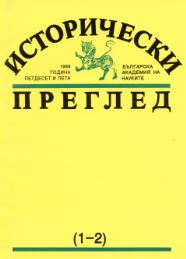
Averkii Petrovich was one of the figures who distinguished themselves in the field of education during the mature period of the Bulgarian national Revival. From his youth to his death he devoted himself with consistency and zeal to the modernization of the Bulgarian society that had lagged behind owing to the centuries long isolation from the development of Europe. A. Petrovich was born about 1829 in Sopot at the foot of the Stara Planina Mountains. Very young he became a monk at the Sopot monastery, and in 1845 entered the Belgrade seminary. During his studies in Belgrade which he successfully ended in 1848 he translated two Serbian books. After his return to Sopot, without leaving the monastery, for a few years he worked as teacher in the school there and continued to translate books. In 1858 A. Petrovich left for Kiev and joined the Kiev Theological Academy. Four years later his thirst for knowledge led him to Dresden where he studied German and French and continued to occupy himself with literature. In 1865 Petrovich went again to Belgrade and afterwards to other Serbian towns where he worked as a school master and continued to translate. At that time he did not dare to return to his motherland, fearing persecution by the Patriarchate of Constantinople. In 1872, after a prolonged struggle, the newly established Bulgarian Exarchate began to function and A. Petrovich was elected Metropolitan of the Vratsa diocese. Unfortunately, he soon clashed with the contradictory interests of the Turkish administration and the Bulgarian church community. Although highly educated, he lacked the practical skill to overcome complicated political situations. This compelled him after one year to hand in his resignation and to return to Constantinople. There for another few years he engaged in ecclesiastical and literary work, and died in early 1878, only months before the establishment of the new Bulgarian State.
More...
In the late 18th and during the 19th century in Gabrovo existed a considerably big merchant class that with its activity not only met the requirements of the time but also contributed to the emergence of Gabrovo as an important commercial centre. The commercial relations of the town with Odessa were an expression of its economic capacity and prospects. The History Museum – Gabrovo keeps commercial accounts, statements and letters of Vassil Rasheev, addressed to the Gabrovo merchants Totyu Antipov, Roussi Stoyanov and Radoslav Iliev. These papers cover the period from July 1866 to July 1887 and make possible certain inferences and conclusions to be made concerning the ties of the Gabrovo merchants with Odessa. Through Vassil Rasheev they imported hides and wool. The data from the documents offer abundant material about the purchase of these items. Owing to their fragmentariness it is not possible to make a quantitative analysis. When compared, however, they give an idea of the kind of the articles exchanged between Gabrovo and Odessa, the way in which trade was conducted and the routes of transporting the goods, the movement of prices and the relations between the merchants. Important information about the commerce with Odessa is obtained also from the letters of the Svishtov merchant Aleko h.Konstantinov and the inhabitant of Gabrovo Nanyu Trifonov, a merchant in Constantinople, to the Gabrovo merchants mentioned above. The Gabrovo merchants imported from Odessa also fish, caviar and butter. The participation of the Gabrovo merchants in Russian-Bulgarian trade contributed to the development of the local market, to the expansion of artisan production in Gabrovo, to the accumulation of funds and the consolidation of commercial capital. These trade relations contributed to the favourable development of the commodity-financial relations and also to the gradual integration of the Bulgarian lands in the European economy.
More...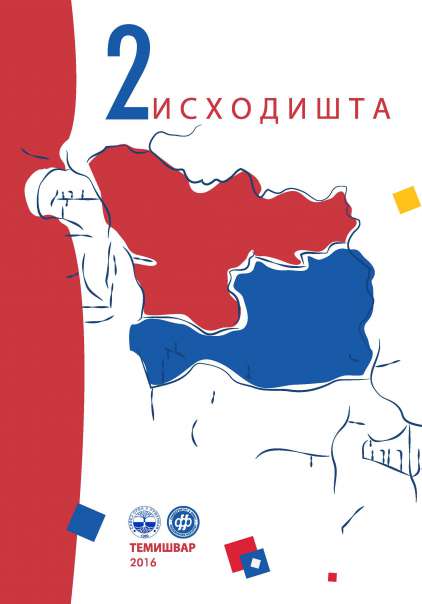
Аутор рада је себи поставио за циљ да сажето прикаже историју, говор и ономастику Банатске Црне Горе. У првом делу рада су подаци о писаним поменима њених данашњих насеља, о времену досељавања Срба на њене просторе и о њиховом пореклу, о српском становништву и о његовом световном и верском животу итд. Други део је посвећен „банатско-црногорском говору“, који је, у ствари, српски архаични, периферијски говор, са незамењеним старим јатом, са бројним фонетичким и морфолошким особинама, са архаичном лексиком и позајмицама у њој из страних језика. Његов трећи део је кратак осврт на „банатско-црногорску ономастику“, која је углавном српска, али има у њој и елемената немачког, мађарског и румунског порекла.
More...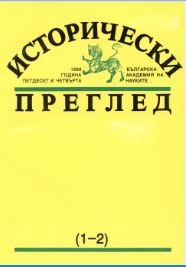
The interest of the German scholars in Bulgaria was stirred up together with the resurrection of the Bulgarian State after the Liberation (1878) form five centuries of Turkish slavery. The quantitative increase in the publications to a certain extent reflected the economic and political interest of the Great Powers in the “heart” of Europe in the small state in its periphery but of strategic importance as a bridge between the East and the West, the North and the South. Characteristic of the German historical Bulgarian studies in that sixty-years long period were: first, the participation in it of representatives of all branches of the humanities, as well as of politicians, public figures, the military, etc.; second, the rich range of the themes and events studied which contributed not only to a scientific acquaintance with the Bulgarian lands, the Bulgarian people and the vicissitudes in the fate of the Bulgarian State, but also to their popularization in Germany. Unlike the works of the contemporary German historians, those of their pre-war predecessors indicated the correct approach of a scholar not burdened by national bias and ad hoc interstate relations on the Macedonian question. It was the fruit of thorough researches into Bulgarian history and personal contacts with the population of the Macedonian land. German historiography on Bulgaria has made a doubtless contribution to the strengthening of the scientific ties between historians of the two countries, to the professional communications from which they benefited and, therefore, to the enrichment of bilateral cultural relations.
More...
In this article are published for the first time newly discovered marginal notes in ten liturgical books form Kotel, kept at present in the churches of the town, in the Sliven State Art Gallery and in private family archives. These texts contain information about various events: the Kotel revolt of 1809, the population in 1830, the Crimean War (1853–1856), the April Uprising (1876), the Russo-Turkish War of Liberation (1877–1878), the Reunification (1885), about names and events connected with local history, and local Kotel families. Particularly impressive are the scholia in the menologion dated form the end of the 18th and the very beginning of the 19th century and the interesting chronicle of Randyu Stanchev Randev (1833–1919). The newly found marginal notes should be regarded as part of the rich literary heritage of the Kotel area owing to which the interest of the researchers in them would be fully justified.
More...
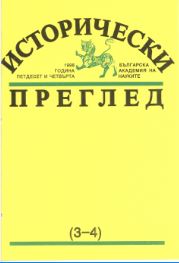
The text of B.N. Chicherin’s memorandum “The Peace of Berlin before Russian Public Opinion” is accompanied by an explanatory text of Associate Professor Sergey Leonidovich Chernov of “M.L. Lomonosov” Moscow State University, a researcher of Russia’s foreign policy problems during the second half of the 19th c. The article acquaints the readers with the principal view that existed in Russian society in 1878 on the decisions of San Stefano and Berlin, and with the specific opinion of B.N. Chicherin of the role of the state and particularly of Russia in the dynamically changing process in the European Southeast. B.N. Chicherin developed in detail this position in the document published where also he sought a behaviour of the Russian Empire adequate to the established situation and advantageous for the interest of the state.
More...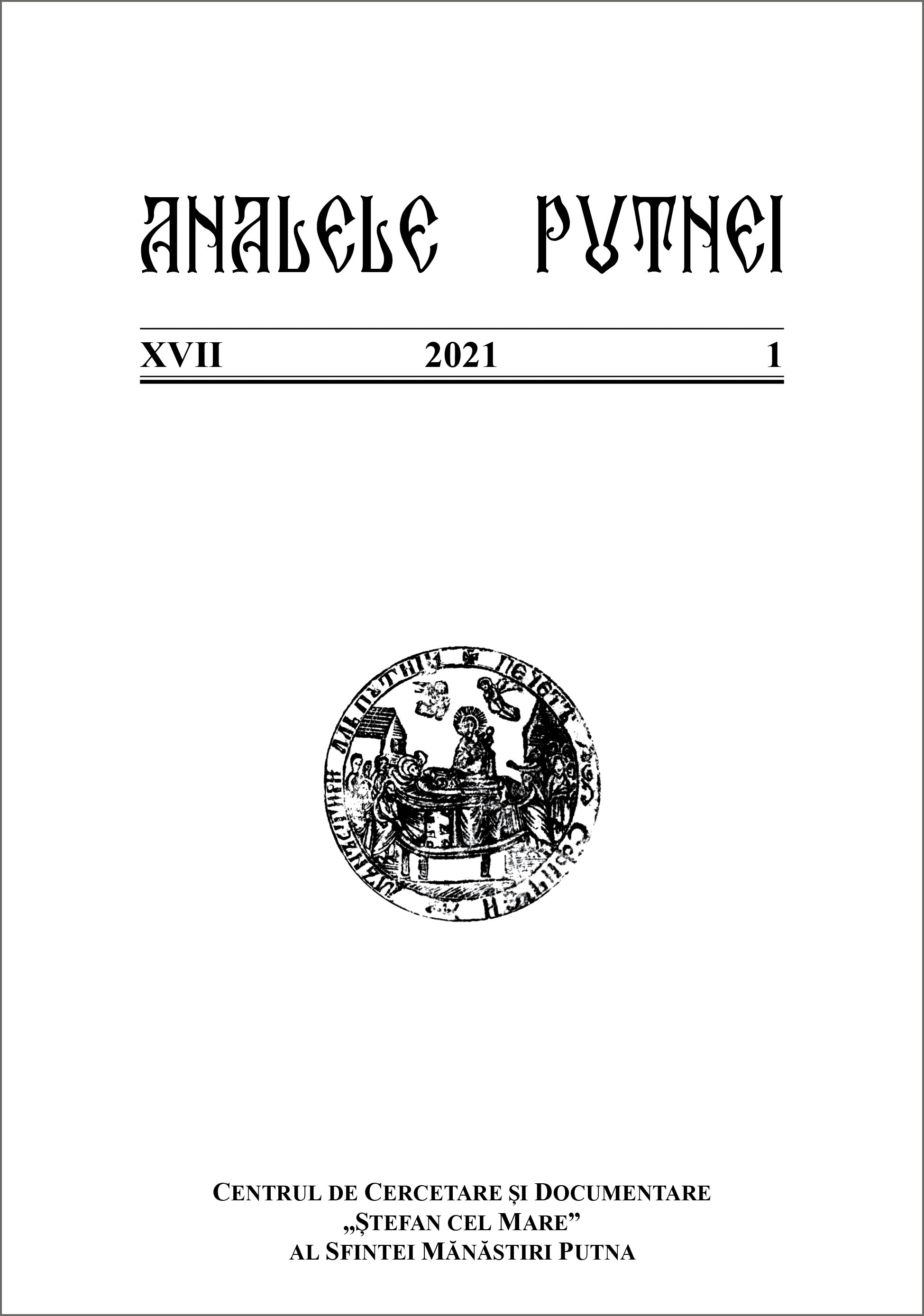
The features of the music manuscripts from the Putna music school are discussed. Special emphasis is put on new findings from the studies of Bulgarian scholars. Two manuscripts are under special scrutiny – the famous Book of Eustatie from 1511 and Manuscript 816 from the library of the Church Historical and Archival Institute at the Bulgarian Patriarchate in Sofia, dating from the third quarter of the 16th century, identified as belonging to the Putna music school. There arises the question about the connection between the music activity of Putna and the 14th-century Tarnovo literary and hymnographic school. The article emphasizes that the Putna music manuscripts document the complete adoption of the late-Byzantine (known also as “Koukouzelian”) musical system in the Slavic language of Bulgarian redaction, according to the new redaction of the Jerusalem Typikon of the 14th century. The activity of Hieromonk Eustatie, the most prominent representative of the Putna music school, is discussed. Two important stichera included in his books are considered – the one for St. John the New of Suceava and the one for St. Petka (Paraskeva) of Epivat. It is argued that the text of the first was written by Gregory Tsamblak, a pupil of the last Bulgarian Patriarch, Euthimios. Tsamblak wrote an entire office for St. John the New at the beginning of the 15th century, when he was a presbyter of the Moldavian Church. The sticheron for St. Petka (Paraskeva) turns out to be the first fully notated sticheron for the saint stemming from the Orthodox Balkans. It is concluded that one of the major tasks being accomplished at Putna was to preserve the Orthodox memory in the context of foreign religious domination in the Balkans. The repertory performed there was notated, including the music for particularly revered saints that were praised in the Orthodox countries of Slavic language. Researching the activity of the Putna music school allows us to look centuries back and reveal the foundations of what is sacred to every national culture: the creative power of memorable personalities and events that have become an example and inspiration for future generations.
More...
The connection between the Moldavian and Ukrainian-Belarusian chant traditions of the 16th –18th centuries is not easy to materialize at the level of the chant repertoire. Firstly, the comparative analysis of chant repertoires is complicated by the use of different musical notations. Secondly, the Ukrainian-Belarusian chant repertoire, the roots of which go back to the chant tradition of the Old Rus, is almost 100% anonymous. In the 16th–17th centuries, new chants appeared in Ukrainian and Belarusian manuscripts, often with accompanying toponymic remarks indicating their foreign origin: Greek, Bulgarian, Serbian, Wallachian, and so on. The comparison of the same chant in different manuscripts reveals differences in the designation of its origin. The connections between the Putna and Manyava monasteries are outlined. The results of Elena Tončeva’s research based on the Manyava manuscripts are analyzed and considered in a broader context. To date, we have identified five Greek-language chants common to Moldavian and Ukrainian-Belarusian manuscripts. There are the Cherubic songs Οἱ τὰ Χερουβεὶμ of Ioannes Glykys, Manuel Chrysaphes and Anthimos Lavriotes; the Cherubic song of the Presanctified Gifts’ liturgy Νῦν αἱ Δυνάμεις of the monk Longin and Sunday Communion Αἰνεῖτε τὸν Κύριον of Joakeim Harsianites.
More...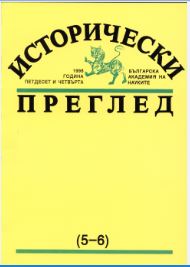
After the Russo-Turkish War of Liberation in 1877–1878 and the Congress of Berlin, the Razlog areas remained within the boundaries of the Ottoman Empire. The Turkish authorities with the assistance of the Patriarchate of Constantinople tried to destroy the established school structure and to stop the development of education in the region. It was only after 1885 when at the Bulgarian Exarchate was set up a “School Department”, that it took over the management and control of the entire network of schools and introduced uniform plans and programmes for the primary schools in Macedonia and Thrace. The rapid development of the primary school in the Razlog are, the inclusion of ever more children in school age and the appointment of teachers were an achievement for the development of education in the area which had remained outside the boundaries of free Bulgaria. Notwithstanding the difficulties, the primary schools in Razlog and the Razlog area performed their function of mass popular schools that provided literacy and good preparation for entering the higher level of education.
More...
The question is discussed of the facts, passed over in silence or missed, connected with the activity of Dr Vassil Radoslavov as Minister of Justice in P. Karavelov’s Cabinet (1884–1886), his attitude to the Union of the Principality of Bulgaria with Eastern Roumelia, to the Serbo-Bulgarian War, to the abdication of Prince Alexander Battenberg, etc. Indicated are the biased and one-sided selection and interpretation of the facts connected with the sentence of 1903, the wrong statements that he was supported by the German Government during the years of his emigration in Germany (1918–1929), etc. The conclusion is drawn that Dr Radoslavov’s complex and contradictory life needs reassessment on the basis of an all-rounded and impartial study of the available archival and documentary material, analysed and summed up in accordance with the complex of political, economical, international, psychological and other historical conditions and without the limitations of the partisan canons and cliches. The objective assessment and the writing of a solid biographical study on Dr Vassil Radoslavov, that has been absent so far, are necessitated by his active presence on the political scene (for more than 20 years) and the principal role he played in the most difficult moments in the history of the Bulgarian State, in preserving and defending its territorial integrity and sovereignty. The problem raised indicates the need for changes of principle in the approach and starting positions of the researchers in writing biographies of the Bulgarian politicians.
More...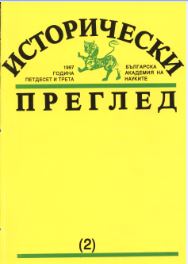
Although the memoir of Alexander Exarch is known to Bulgarian historians, it has not been printed in full. The authoress interprets the Memoir which in point of fact was a political declaration of the Bulgarian political centre in Paris in the early 1840s. It clearly defined the ways in which the all-Bulgarian movement for spiritual and political development should be realized. The memoir gives also a clear idea of its author, Alexander Exarch, one of the most active champions of the cause of Bulgaria’s liberation in the middle of the past century.
More...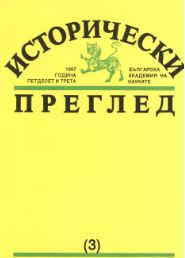
The brief parallel survey of the studies during the last decade into the European provinces of the Ottoman Empire in the 16th – 17th c. in historiography permits the drawing of some most general conclusions. The large number of scholarly studies and their indubitable scientific merits continue to uphold the high prestige of Bulgarian and Hungarian science in the field of Ottoman research, built up and consolidated already in the preceding decades, noticeable and fully understandable is the preference of the preference of the researchers for their native history during the Ottoman period, examined within the natural ethnic boundaries of the Hungarian and Bulgarian lands respectively. Problems of the political, economic and cultural history and also of historical demography are dealt with in harmony. Practically without exception the research is carried out on the basis of abundant newly found source material and contains important factual and conceptual contributions. A drawing closer of the stands of Hungarian and Bulgarian Osmanists emerges in the interpretation of historical events. Some romantic and extreme assessments which retain as their perimeter chiefly more popular publications are being abandoned. Studies by Hungarian and Bulgarian Osmanists ever more often are present in thematic collections and other publications brought out in Germany, Great Britain, France, Austria, Russia, Turkey and elsewhere. One should regret, however, that the Bulgarian and Hungarian historians, with very few exceptions, do not know each other as authors. If this historiographic survey stimulates at least to some degree greater mutual scientific interest, it could considered that it has realized, though partially, its intention.
More...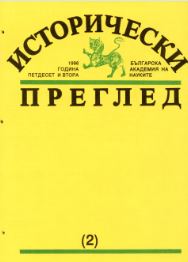
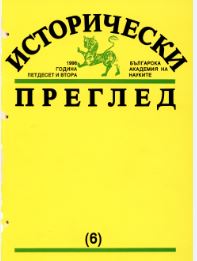
After the Ottomans had gradually crushed the resistance of the Hungarian Kingdom in a constant wartime of more than one hundred years, from the 1520s on they began to occupy Hungarian territories. Concerning the political aims of Suleyman (1520–1566) two diametrically opposed views have been advanced. One group of scholars maintain that the Ottoman ruler did not want to subjugate Hungary directly, but he wished to compel the Hungarians to accept a vassal status similar to that of the Moldavian and Wallachian principalities. According to others, the Ottoman ruler intended to extend his dominion over Hungary right from the outset, and to this end he used the traditional Ottoman method of gradual conquest. The authors of the article share the latter opinion, and at first they demonstrate how the strategy of gradual conquest was put into practice in Hungary between 1520 and 1541. At the same time they regard the Ottoman occupation of Central Hungary in 1541 as a consequence of the Habsburg aspiration as well. Originally, both the Ottomans and the Habsburgs aimed at dominating the whole of Hungary, but, due to the balance of their military forces, none of them was able to carry out maximum programme. As a result, Hungary became an area of war and conflicts between two world empires for more than 150 years, and the Hungarian Kingdom, which had been exceptionally unified during the Middle Ages, was divided into three spheres of political influence: Ottoman, Habsburg and Transylvanian. Since the military forces of the Habsburg and the Ottoman empires virtually balanced each other in the 16th century, none of them was able to conquer the whole of Hungary. Consequently, they divided the country, establishing a state of permanent wartime for 150 years, which did not totally appease itself even when the two opponents were theoretically at peace. Because of the constant state of war and the country’s being in the front line the Ottomans garrisoned a very considerable regular army (of some 25 000 men in the 1570s) there, which was completed by thousands of unregistered soldiers. Turkish administration in the capital and in the country regarded as its chief task the provision of this military force. The Ottoman rule in Hungary remained before all a military occupation, civil authority only manifesting itself in the field of the administration of landed property and of finances. There was hardly any effort of Islamization in Hungary, the Hungarian laws remained in force, and the municipalities of the Hungarian towns and villages also lived on and even increased their independence. The export of cattle and wine and also the cultural relations linked the territory under Ottoman occupation to the royal part of the country and to Western Europe.
More...